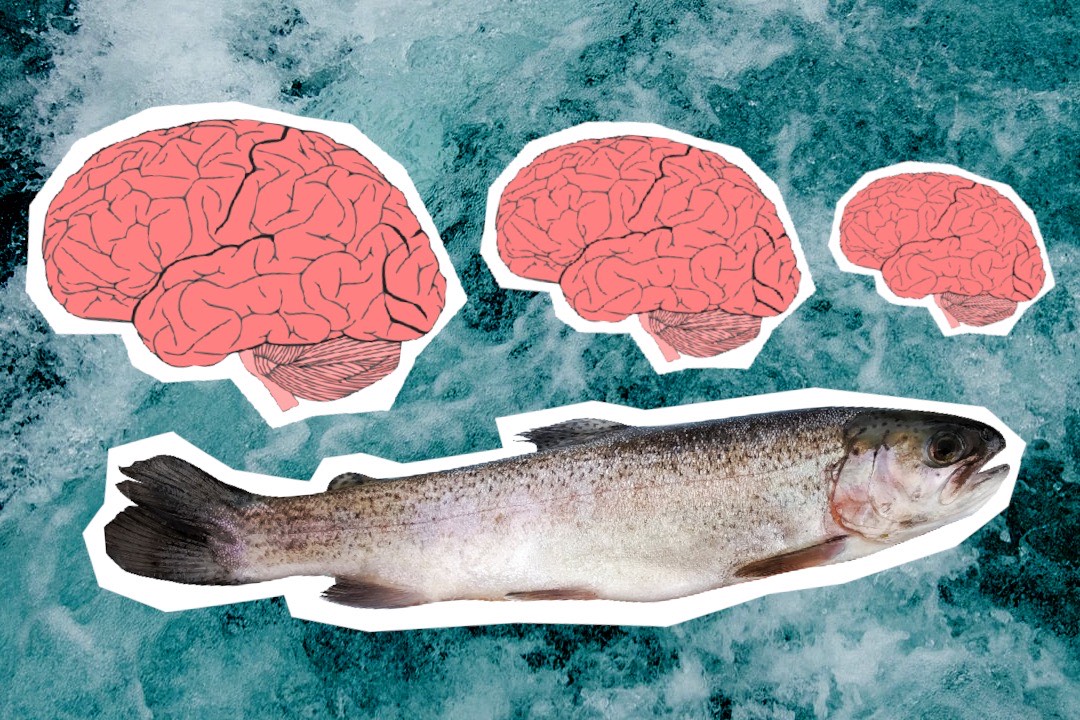We all know and love the expanding brain meme. It’s versatile, iconic, and perfect for getting a point across.
Well, it turns out that trout might find this meme relatable too. A recent collaborative study by researchers at UTM, the University of Guelph, and the Ontario Ministry of Natural Resources found that the brain size of these freshwater fish fluctuates with the temperature of their environment, suggesting that they have literal big brain energy in the fall and wintertime.
There are many factors that might contribute to this seasonal brain variation. For one, trout migrate to shore during fall and winter. Their big brain period also happens at the same time as their breeding season. This means they require more brain power during that period.
Trout go with the flow
Trout are able to survive vast environmental change. Seasonal changes prompt trout to change their behaviour and movement patterns so they can migrate toward the shoreline to breed. Temperatures in lakes decline drastically during the winter months and light levels decrease similarly, so trout need to be diligent when locating and capturing their prey. Their ability to navigate the harsher winter months is bolstered by their neural flexibility.
Currently, researchers hypothesize that these fish change their brain size in order to brave these environmental changes. For the collaborative study, fish from two trout populations in Algonquin Provincial Park — from Lake of Two Rivers and Lake Opeongo — were collected seasonally. After appropriate and approved euthanization methods, researchers measured their brain sizes.
They found that trout brains are at their smallest in the warmer seasons, and larger in the colder months. However, researchers believe there are more contributing factors to this fluctuation besides changes in temperature. With fluctuations in weather conditions comes an increase in cognitive need.
Implications of brain size
So, does size always matter? It turns out that, in lake trout, it may.
However, the entire trout brain doesn’t grow proportionately. Researchers found that certain brain regions demonstrated more of this growth. Specifically, the telencephalon — or the cerebrum — which is the largest part of the brain, showed significant growth, while other parts of the trout brain showed a less significant seasonal change in size. It is still unknown whether or not trouts’ individual brain regions can change independently.
It was also suggested that the size of trout brains might be influenced by cognitive need. When there is a higher demand on the fish to perform tasks that require more brain power, such as changing habitats, breeding, or increased movement, they may alter their brain size accordingly.
There’s still so much more to be discovered about the activity of these humble fish, including further exploration of their brains. Regardless, it’s safe to say that the trout’s fantastic ability to change their brain size is part of what allows them to be active year-round.


